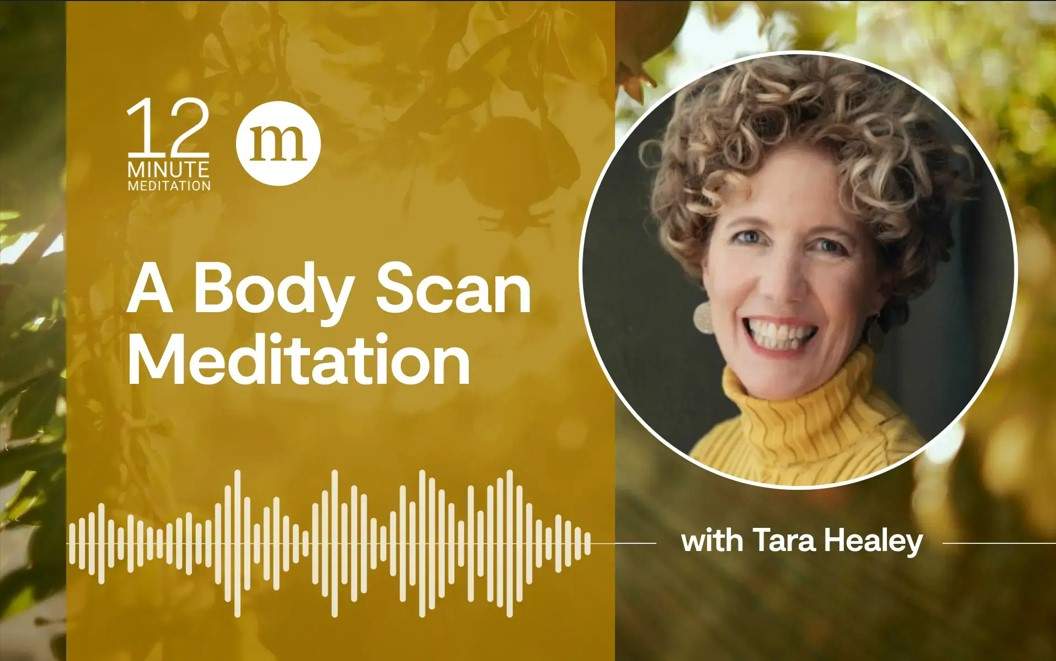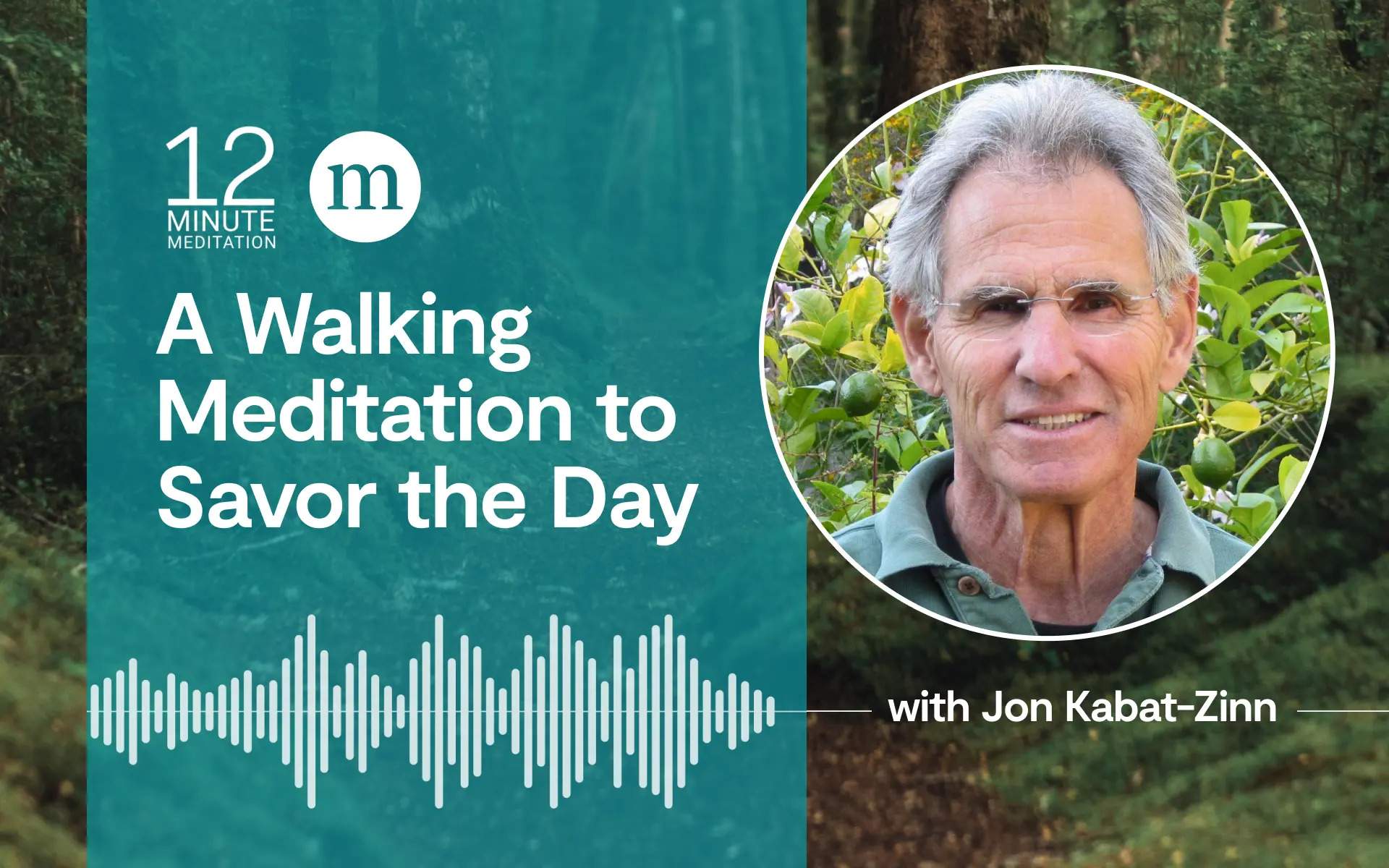While this article has been reviewed for accuracy and fairness by Mindful editors, some material in this article was generated by AI. To learn more about our AI practices and why we sometimes use AI to generate content, please see our statement here.
Are you feeling completely drained, even if you’re technically getting enough sleep? Are you experiencing more illnesses than usual? Do you have trouble focusing, especially at work? Do you dread facing the day or struggle with feelings of self-doubt, even when you have a track record of performing well? If you’ve been dealing with symptoms like these, it’s possible that you might be experiencing burnout, which is a state of mental, physical, and emotional exhaustion that can occur during periods of ongoing stress. The good news is that burnout recovery is possible with the right steps. This article covers practical tips on how to recover from burnout, so you can reclaim your energy and motivation.
- Burnout is a state of emotional and physical exhaustion caused by prolonged stress, and early recognition and intervention are crucial to prevent its severe long-term effects.
- Common symptoms of burnout include feelings of failure, self-doubt, physical tiredness, frequent illnesses, and cognitive issues like forgetfulness and difficulty focusing.
- Effective strategies for how to recover from burnout involve prioritizing quality sleep, managing stress through mindfulness and relaxation techniques, incorporating regular physical activity, and maintaining a balanced lifestyle with clear boundaries and seeking support from loved ones and professionals.
Understanding Burnout
Burnout is more than just feeling tired after a long day; it’s a state of emotional exhaustion brought on by prolonged or intense stress. When experiencing burnout, one may feel overwhelmed, emotionally drained, and unable to meet constant demands.
What makes burnout uniquely debilitating is that, unlike regular stress, which results from too much pressure, burnout is often also accompanied by too little motivation or care. This creates a cycle of accumulating tasks and overwhelm, with diminishing energy or incentive to make headway.
The consequences of burnout are far-reaching. It can reduce productivity, sap energy, and lead to feelings of helplessness and hopelessness. Left unaddressed, burnout can cause long-term physical changes, making individuals more susceptible to illnesses, which can lead to chronic mental, physical, and emotional health issues. Early recognition and intervention are essential to prevent the severe stages of burnout and to discern how to recover from burnout once you know where you are.
Stages of burnout
Burnout typically progresses through several stages, each characterized by different symptoms and intensities:
- Honeymoon Phase: At the beginning, you feel enthusiastic and committed, often taking on more responsibilities. However, you might start neglecting your own needs and ignore signs of stress.
- Onset of Stress: As stress builds, you may begin to notice signs like irritability, anxiety, and difficulty focusing. Physical symptoms such as headaches or fatigue may also start to appear. Productivity may begin to decline, and you might feel overwhelmed.
- Chronic Stress: In this stage, stress becomes persistent. Symptoms intensify and become more frequent. You may experience persistent tiredness, resentment, and a decline in work performance. This stage is marked by a noticeable shift in attitude, often toward negativity and cynicism.
- Burnout: At this stage, symptoms are severe and can include chronic exhaustion, detachment, and feelings of helplessness or hopelessness. Physical symptoms may include insomnia, gastrointestinal issues, and increased vulnerability to illness. Emotional symptoms might include apathy, self-doubt, and a sense of failure.
- Habitual Burnout: In the final stage, burnout becomes a persistent state of being. The symptoms become embedded in your daily life, significantly affecting your physical and mental health. Chronic mental health issues like depression and anxiety can develop, and there’s often a significant decrease in motivation and overall life satisfaction.
Common Burnout Symptoms
Recognizing the symptoms of burnout early can be the key to preventing it from worsening and can be helpful in learning how to recover from burnout. This condition manifests in various emotional, physical, and cognitive signs. Some common symptoms include:
- Emotional Exhaustion: Feeling drained, overwhelmed, and emotionally worn out.
- Physical Fatigue: Persistent tiredness that doesn’t go away even with rest.
- Decreased Performance: Struggling to focus, forgetfulness, and a drop in productivity.
- Detachment or Cynicism: Feeling disconnected from work or people, or becoming increasingly negative.
- Loss of Motivation: Lack of enthusiasm or interest in activities you once enjoyed.
- Increased Irritability: Becoming easily frustrated or angry over small things.
- Sleep Problems: Trouble falling asleep, staying asleep, or getting restful sleep.
- Frequent Illnesses: Weakened immune system leading to more frequent colds or other illnesses.
- Changes in Appetite: Eating too much or too little.
- Feelings of Failure or Self-Doubt: Constantly questioning your abilities and feeling inadequate.
These symptoms often contribute to a sense of being overwhelmed and disengaged from responsibilities. It’s important to address these symptoms and take steps to prevent burnout and to aid in burnout recovery.
Physical symptoms can be subtle at first, but can escalate if left unchecked. Regularly checking in with yourself is a valuable practice. If you’re feeling overwhelmed, it’s important to stop and ask questions like:
How is my body feeling physically? Am I holding tension anywhere? What is the quality of my sleep? Am I giving my body the quality nutrition and hydration it needs to function well?
These reflective questions can help you identify early signs of burnout and take proactive steps to help you recover from burnout.
How to recover from burnout: 10 strategies to promote healing
Acknowledging that you are experiencing burnout is the initial step towards recovery. You’ll need to be open and honest with yourself about your feelings in order to begin the healing process.
After acknowledging the problem, creating some distance between yourself and your stressors is key.
This might involve taking a leave of absence if possible or simply taking a mental health day. Prioritizing your health, whether that means getting extra sleep or engaging in your favorite activities, is key to recovery.
Recovery from burnout involves several strategies, each aimed at improving different aspects of your well-being. By implementing these techniques, you can support your journey towards healing and rejuvenation. Let’s take a deeper look at each of these recovery steps.
1. Prioritizing Quality Sleep
Quality sleep is a cornerstone of burnout recovery. In addition to being critical in recovering from burnout, proper sleep not only improves overall well-being but also reduces the risk of depression and alleviates many physical symptoms associated with burnout. When sleep is neglected, emotional and physical symptoms of burnout are amplified, making recovery even more challenging. Aim for 7–9 hours of quality sleep each night to support your recovery process.
Prioritizing quality sleep can lead to a significant improvement in your mood, your energy levels, and your cognitive function, all of which are vital for recovering from burnout.
Establishing a Sleep Routine
To improve sleep quality, you need a sleep environment that supports true rest. . Ensure your bedroom is dark, cool, and quiet to promote good sleep hygiene. Additionally, developing a wind-down routine, such as reading, taking a bath, or listening to relaxing music, can help signal your body that it’s time to sleep.
If you find yourself unable to sleep after 20 minutes, it’s advisable to get out of bed and engage in a quiet activity until you feel sleepy. Establishing these habits can significantly enhance your ability to get restful sleep, which is critical for burnout recovery.
2. Managing Stress Effectively
Burnout recovery heavily relies on effective stress management. Moderating stressors, making room for breaks and rest, creating more balance, and seeking support from loved ones or professionals are all effective strategies—but it’s not always easy to know where to begin or how to carve out space for new stress-reducing habits.
Especially if you have a demanding job, or are a sole caregiver in a stressful family situation, the advice to “just take more breaks” can feel impossible and even more overwhelming.
It can be helpful to start by simply and intentionally taking 15-20 minutes in a day—without pressure to engage in elaborate or complicated activities—to practice the kind of self-care that can start to make a difference in reducing stress.
This can be as simple as incorporating basic mindfulness practices like:
- Meditation
- Exercise
- Deep breathing
- Mindful movement
Balancing stressful activities with scheduled moments of rest or reflection, even if it’s just for a few minutes, also aids in the burnout recovery process.
Mental health therapy can be particularly beneficial in understanding the effects of chronic stress on thoughts and behaviors. It offers tools and strategies to manage stress and provides personalized recommendations to suit individual needs.
3. Mindfulness Practices
Mindfulness practices can be a powerful tool in the process of learning how to recover from burnout. They can significantly reduce feelings of stress and anxiety, improving coping skills during burnout recovery. Regular mindfulness meditation, journaling, or deep breathing exercises help manage stress effectively and enhance overall well-being.
Mindfulness activities provide a sense of calm and clarity, allowing you to better handle the pressures of daily life. Again, this can be done in as little as 12 minutes, and the activities can be very simple. The more you practice sitting in stillness, just being with emotions, and learning to regulate your nervous system, the more you’ll notice improvements in emotional and mental resilience.
4. Incorporating Physical Activity
As an effective tool in overcoming burnout, regular physical activity offers numerous health benefits. A single 30-minute session of moderate exercise can significantly improve mood and boost motivation by releasing endorphins, the feel-good neurotransmitters. Exercise also aids in cognitive regeneration, helping the recovery of cognitive processes and the central nervous system.
Physical activity increases blood flow to the brain, particularly the hippocampus, which improves learning and memory. Incorporating exercise into your routine not only benefits your physical health but also supports your mental well-being, aiding in burnout recovery.
Types of Exercise for Recovery from Burnout
Engaging in various types of exercise can help alleviate stress and aid in burnout recovery. It’s important to focus on gentle exercises that don’t increase cortisol levels. Some examples include:
- Yoga combines moderate activity with mindfulness and meditation, making it highly beneficial.
- Walking is an excellent low-intensity exercise that promotes relaxation and enjoyment.
- Biking is another low-intensity exercise that can be done outdoors, providing both physical and mental benefits.
- Swimming is easy on the joints, promotes relaxation, and has been shown to improve symptoms of anxiety and depression.
5. Setting Boundaries
To manage stress and prevent burnout, setting clear boundaries is essential for maintaining work-life balance. Ensuring that work and personal life do not overlap helps protect mental health and well-being. Boundaries allow for adequate rest and personal time for activities that replenish energy, preventing feelings of overwhelm and stress. They are a simple—but not always easy—cornerstone in the process of learning how to recover from burnout.
Learning to say no to unreasonable demands and prioritizing personal well-being is vital in preventing future burnout. By establishing clear expectations and limits, you can improve self-esteem, self-respect, and maintain healthier relationships.
6. Saying No and Delegating Tasks
To manage workload and reduce stress, it’s necessary to learn to say no and delegate tasks. Consistently saying no to additional tasks when overwhelmed helps maintain boundaries and prevent burnout. Delegating tasks can help manage stress by reducing workload and allowing focus on more critical activities.
Discussing workload priorities with managers is essential to reduce excessive demands and prevent burnout. By managing your workload effectively, you can prevent overwhelm and protect your well-being.
7. Building a Personal and Professional Support Network
In recovery from burnout, seeking support from friends, family, and professionals is key. A strong support network provides emotional assistance and practical advice, positively influencing the speed of recovery. Staying connected with loved ones offers emotional support and a sense of belonging, which are important during burnout recovery.
Professional support networks help individuals feel understood and less isolated. Acknowledging your feelings and those of others can build true connections and reduce burnout.Therapists and counselors are able to offer tools and strategies to help manage stress. They can provide personalized recommendations tailored to individual needs. They can help heal the wounds that might have led you to overextend yourself in the first place, and they can help build practical skills around self-care, setting boundaries, and learning how to clearly communicate your needs. Some workplaces may offer counseling through their HR department, providing additional support for employees who are looking for guidance on how to recover from burnout.
8. Engaging in Enjoyable Activities
Participating in activities that bring joy and relaxation can significantly aid in recovering from burnout. Activities such as listening to music or cooking at home support relaxation and enhance overall well-being.
Pursuing enjoyable activities is essential for fostering joy and relaxation, which can significantly aid in recovering from burnout. Prioritizing these activities can help restore balance and improve your emotional well-being.
9. Healthy Eating and Hydration
For mental and physical health, cognitive function, and burnout recovery, a balanced diet and proper hydration are crucial. Drinking enough water is crucial for maintaining optimal brain function and concentration levels.
Dehydration can negatively affect energy levels, self-esteem, short-term memory, and attention. Eating water-rich fruits and vegetables like watermelon, zucchini, and celery can contribute to daily water intake and support overall well-being.
Nutritional Tips for Recovery
Consuming antioxidant-rich foods, lean proteins, and magnesium-rich foods can help regulate stress and support you from burnout recovery. Some examples of these foods include:
- Berries
- Nuts
- Leafy greens
- Fish
- Chicken
- Whole grains
These foods are rich in antioxidants, which can help you reduce oxidative stress.
Including lean proteins in meals can help maintain energy levels and muscle health. Some examples of lean proteins include:
- Chicken breast
- Turkey breast
- Fish (such as salmon or tuna)
- Greek yogurt
Magnesium-rich foods, such as spinach and almonds, can help regulate stress and anxiety, supporting the recovery process.
10. Reassessing Priorities and Goals
Burnout often signals that something in life is misaligned with personal values, requiring a reflection and adjustment of goals. Taking time to think about and reassess priorities—either on your own or with the support of a mental health professional— can be a powerful tool for building a healthier and more balanced lifestyle.
Reassessing priorities and goals involves:
- Identifying what’s truly important to you
- Aligning them with your personal and professional aspirations
- Adjusting current goals or setting new ones that better reflect personal values
Frequently Questions Asked About How to Recover from Burnout
How long does it typically take to recover from burnout?
Recovering from burnout can take weeks to months, depending on the severity of the burnout and the individual’s commitment to recovery strategies.
How is exhaustion different from burnout?
The main difference between exhaustion and burnout is that exhaustion is extreme tiredness, while burnout is emotional, physical, and mental exhaustion caused by prolonged stress.
What are the common signs of burnout in the workplace?
If you are experiencing reduced performance, feeling overwhelmed, lack of engagement, and emotional exhaustion at work, these could be signs of burnout. It’s important to address these symptoms before they escalate.
When should you consider seeking professional help for burnout?
Seek professional help for burnout when self-care and recovery strategies are not helping, or when burnout symptoms start severely affecting your daily life. It’s important to reach out to a counselor or therapist to get the necessary support.
Is burnout the same as anxiety?
Burnout and anxiety are not the same, though they share some symptoms. Burnout is a state of exhaustion from prolonged stress, often work-related, while anxiety involves excessive worry and fear, with a broader range of triggers. Treatment approaches differ, so it’s important to distinguish between the two.
Can burnout make you sick?
Yes, burnout can make you sick. The chronic stress associated with burnout can weaken the immune system, leading to increased susceptibility to illnesses like colds and infections. It can also contribute to physical symptoms such as headaches, digestive issues, and sleep disturbances. Prolonged burnout may exacerbate conditions like hypertension, heart disease, and depression, highlighting the importance of addressing burnout early to maintain overall health.






